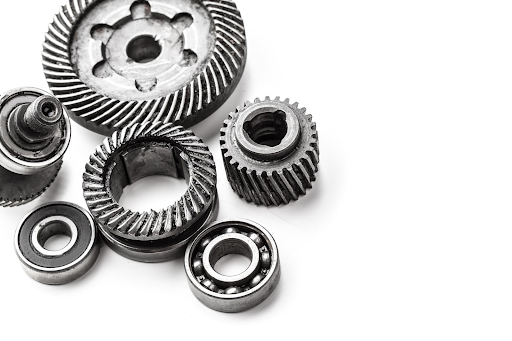Brake systems are critical in vehicle safety, ensuring you can stop or slow down effectively. Among the components that make this possible, brake liner stands out as an essential part. But what exactly is a brake liner, and why is it important? This article delves into its definition, uses, and how it functions to keep your vehicle safe on the road.
What is a Brake Liner?
A brake liner is a significant component of brake linings. A brake lining is a layer of friction material attached to the brake shoes or pads. When brakes are applied, the pads create a friction that helps slow down or stop the vehicle from going any further.
These liners are made from materials like asbestos, ceramic, or organic composite depending on the vehicle type and use. Without the brake liner, the brake process would by no means work efficiently to stop the vehicle. This small but essential component actually acts to slow down the wheels of the vehicle whenever the driver commands.
What is the Use of Brake Liner?
What is the use of brake liner? The answer lies in its ability to create controlled friction. When you press the brake pedal, the brake liner presses against the drum or rotor, converting the moving vehicle’s kinetic energy into heat energy. This process slows the vehicle down.
In simpler terms, the brake liner ensures that your vehicle responds promptly and efficiently when you need to stop. Whether you are driving at high speeds or navigating crowded streets, it plays a pivotal role in safety.
How Does a Brake Liner Work?
The working mechanism of a brake liner is straightforward yet highly effective. Here’s how it operates:
- Activation: When the brake pedal is pressed, hydraulic or mechanical force pushes the brake shoe or pad against the rotating drum or disc.
- Friction Generation: The brake liner, made of friction material, comes into direct contact with the drum or disc. This generates friction.
- Energy Conversion: The friction converts the vehicle’s kinetic energy into heat energy, slowing the wheels’ rotation.
- Heat Dissipation: The brake liner also dissipates the heat generated during braking, ensuring the system does not overheat.
This simple yet effective process makes the brake liner indispensable for safe driving.
Types of Brake Liners
Different types of brake liners are designed to suit various vehicles and applications. Some common types include:
- Asbestos Brake Liners: These were widely used in the past due to their heat resistance but are less common now due to health concerns.
- Organic Brake Liners: Made from natural fibers, they are quieter and eco-friendly.
- Semi-Metallic Liners: These liners are durable and effective for high-performance vehicles.
- Ceramic Liners: Known for their quiet operation and minimal wear, ceramic liners are ideal for passenger vehicles.
Each type of liner has its unique properties, allowing it to perform efficiently under specific conditions.
Why is the Brake Liner Important?
The brake liner is essential for maintaining control over your vehicle. Here’s why it matters:
- Safety: It ensures reliable stopping power in all driving conditions.
- Durability: High-quality brake liners reduce wear and tear on the brake system.
- Performance: The friction material ensures smooth and consistent braking.
Choosing the right brake liner for your vehicle can significantly enhance its performance and longevity.
Signs of a Worn-Out Brake Liner
It’s essential to monitor the condition of your vehicle’s brake liner. Signs of wear include:
- Squealing or grinding noises when applying brakes.
- Reduced braking efficiency, requiring more effort to stop the vehicle.
- Vibration or pulsation in the brake pedal.
- Visible thinning of the brake liner upon inspection.
If you notice any of these signs, it’s time to replace your brake liner. Ignoring them can compromise your vehicle’s safety and lead to costly repairs.
Maintenance Tips for Brake Liners
Proper maintenance of your brake liner ensures its optimal performance. Follow these tips:
- Regular Inspections: Have your brake liners checked during routine vehicle servicing.
- Avoid Overloading: Excessive weight increases stress on the braking system, accelerating wear.
- Smooth Driving: Avoid abrupt braking whenever possible.
- Use Genuine Parts: Always replace worn-out liners with high-quality genuine components.
Adopting these practices can extend the lifespan of your brake liner and enhance your vehicle’s overall safety.
Choosing the Right Brake Liner for Your Vehicle
Selecting the right brake liner is crucial for optimal performance. Consider the following factors:
- Vehicle Type: Different vehicles require specific types of liners.
- Driving Conditions: High-performance vehicles may need semi-metallic or ceramic liners, while organic liners work well for everyday use.
- Quality: Opt for genuine liners from trusted manufacturers like Tata Genuine Parts for guaranteed durability and reliability.
Making the right choice ensures better braking performance and long-term value for your vehicle.
Upgrade Your Vehicle with Tata Genuine Parts
Maintaining your vehicle’s safety and performance starts with reliable components. At Tata Genuine Parts, we offer high-quality brake liners designed to meet stringent standards. Whether you need replacement liners or a complete brake system overhaul, our parts ensure durability and compatibility with your Tata vehicle.
Don’t compromise on safety. Visit Tata Genuine Parts today to explore our range of frictional parts and give your vehicle the care it deserves!





